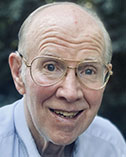
Edward D. Salmon
The University of North Carolina at Chapel Hill
|
Primary Section: 22, Cellular and Developmental Biology Membership Type:
Member
(elected 2021)
|
Biosketch
Edward D. Salmon, known to everyone as “Ted,” is a Cell Biologist, Biophysicist, and Microscopist who devoted his career to elucidating the mechanisms of mitosis using innovative light microscopy techniques and equipment. Ted was born and brought up in Syracuse, NY. He received a B.S. in Electrical Engineering from Brown University and a Ph.D. in Biomedical Electronic Engineering from the University of Pennsylvania. His post-doctoral research was done at the Marine Biological Laboratory (MBL) in Woods Hole, MA, after which he spent his career at the University of North Carolina-Chapel Hill. At the time of his retirement from the Dept. of Biology, after 42 years at UNC-CH, he held a distinguished professorship. Most summers of his career were spent at the MBL as a student, summer scientist, faculty member or library reader. For many years he directed or otherwise participated in a short course given annually at the MBL in Analytical and Quantitative Light Microscopy. He is a Lifetime Fellow of the American Society of Cell Biology, a member of the American Academy of Arts and Sciences, as well as a member of the National Academy of Sciences.
Research Interests
Edward D. Salmon’s goal has been to understand the molecular mechanisms governing assembly of spindle microtubules and segregation of chromosomes during mitosis. His working hypothesis is that mitosis will be explained by the molecular and structural properties of the centrosome, which organizes and nucleates polymerization of spindle microtubules; by the assembly of microtubules, which orient and participate in generating chromosome movements; and by the microtubule motor proteins, which appear to generate polarized forces along the microtubule lattice, at kinetochores, and within the spindle fibers. His laboratory is known for its technological advances in light microscopy methods. They pioneered the development of video and digital imaging methods for analyzing molecular and structural dynamics in living cells and in vitro, developed fluorescently labeled tubulins to serve as tracers in studies of the dynamic pathways for microtubule assembly in vivo and in vitro using low light level fluorescence microscopy and digital image processing techniques, and developed high-resolution video microscopy methods for visualizing polymerization of individual microtubules and motility of motors in living cells and reconstituted preparations. These functional assays provide the basis for determining basic mechanisms of microtubule polymerization and motor function, analyzing kinetochore motility, and the means of eventually achieving chromosome segregation in reconstituted preparations in vitro.

